Last week, Vietnamese sports welcomed a historic change. The Vietnam Volleyball Federation (VFV) decided for the first time to conduct gender identity testing for athletes. This issue has been raised by the public for many years with no small amount of controversy.
Normally, the gender classification of athletes in most sports is based on birth certificates - determined by each person's biological identity at birth. However, when special cases - called "biological disorders", or "gender disorders" appear, the world of sports begins to apply exceptional procedures.
How to determine athlete's gender?
Volleyball’s governing bodies have not yet announced specific procedures. However, biological testing of athletes’ gender is used in many other sports. It is likely that volleyball will do the same.
Determining gender is more complicated than just looking at XX/XY chromosomes or hormones, because of the diversity of human biology. As a result, chromosome testing was abandoned in the late 20th century in favor of hormone testing. However, this has led to controversy and litigation surrounding the policy for women with naturally high testosterone.

Caster Semenya to miss 2024 Olympics after gender controversy
Gender verification testing in sports began in the 1940s with “certificates of femininity” issued by doctors. It then evolved into visual inspection, physical examination, chromosome testing, and later testosterone testing.
From 1958 to 1992, all female athletes underwent mandatory gender verification testing before participating in any IAAF (International Association of Athletics Federations) or IOC (International Olympic Committee) event. The Barr body test, performed by taking a sample from the cheek mucosa, looked for evidence of XX chromosomes, confirming the athlete was female.
Those who passed the test and were confirmed as female would receive a certificate of femininity, which could be used for all future international competitions. However, this testing method was later abolished, as it was found to be insufficient to determine male gender.
In 1992, the IOC made gender verification mandatory, but switched from testing for Barr bodies to polymerase chain reaction (PCR) testing, which looked for “male-related genetic material” using DNA taken from a swab of the lining of the mouth. This method still faced criticism, and by the late 1990s, some medical associations were opposed.
Later, testosterone levels – not XY chromosomes (usually found in males) – were the key criteria for determining qualification for Olympic events, according to regulations developed and approved by the sports governing body.
That’s because some women, who were legally assigned female at birth and have always identified as female, have a condition called a difference of sex development (DSD). This can include XY chromosomes or naturally higher testosterone levels than the typical female range. Some sports officials believe this gives them an unfair advantage over other female athletes, but the science is not yet conclusive.
Testosterone is a natural hormone that increases bone and muscle mass and strength after puberty. In adult men, testosterone levels can be many times higher than in women — up to about 30 nanomoles per liter of blood, while in women they are usually below 2 nmol/L.
The modern era of eligibility rules is said to have begun in 2009, after South African 800m runner Caster Semenya burst onto the scene with a world gold medal at the age of 18. However, Semenya – the 2012 and 2016 Olympic 800m champion – will not compete in the 2024 Olympics.
Semenya has DSD, was legally assigned female at birth, and has always identified as female. In 2019, at a Court of Arbitration for Sport hearing, the international athletics body ruled that athletes with DSD are “biologically male,” which Semenya protested and called “extremely hurtful.” She had to take birth control pills (2010–2015) to reduce testosterone, which caused severe side effects such as weight gain, fever, nausea, and abdominal pain during competition.
The controversy has no end
Each governing body of an Olympic sport is responsible for setting its own rules, from competition rules to who is eligible to participate. In fact, there is no consensus on how to classify athletes by gender across sports, and even governing bodies of the same sport have different views.
Women's boxing arrived at the Paris Olympics with almost identical qualifying criteria to the 2016 Rio de Janeiro Olympics — athletes are considered female if their passports show female gender — after the International Boxing Association (IBA) was permanently banned from the Olympics for decades of mismanagement and an alleged lack of transparency.

Imane Khelif to compete in women's boxing at the 2024 Olympics despite failing the IBA gender test at the 2023 World Championships
For the 2021 Tokyo Olympics, the International Association of Athletics Federations (IAAF) has tightened its eligibility rules for female athletes with DSD. Starting in March 2023, they must lower their testosterone levels to below 2.5 nmol/L for six months—usually through hormone-suppressing therapy—to be eligible to compete. That’s half the 5 nmol/L limit proposed in 2015 for athletes competing in distances between 400m and 1 mile.
World Aquatics has banned transgender women from competing in women's competitions if they have undergone male puberty. The International Cycling Union has taken a similar step.
World Aquatics' world-leading regulations also require transgender female athletes, who do not experience the advantage of male puberty, to maintain testosterone levels below 2.5 nmol/L.
World Aquatics does not conduct proactive testing on young athletes. The first step is for national swimming federations to “certify the chromosomal sex” of athletes.
Similarly, the Fédération Internationale de Football Association (FIFA) leaves it up to national federations to verify and register the gender of players. “There is no mandatory or routine gender testing carried out at FIFA competitions ,” the organization said in a 2011 statement, which is still in effect and is under lengthy review.
Vtcnews.vn
Source: https://vtcnews.vn/bong-chuyen-viet-nam-kiem-tra-gioi-tinh-vdv-khoa-hoc-giai-quyet-van-de-nhay-cam-ar965435.html





![[Photo] Hanoi morning of October 1: Prolonged flooding, people wade to work](https://vphoto.vietnam.vn/thumb/1200x675/vietnam/resource/IMAGE/2025/10/1/189be28938e3493fa26b2938efa2059e)


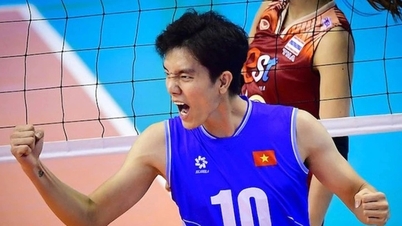





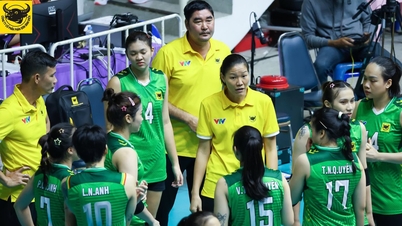





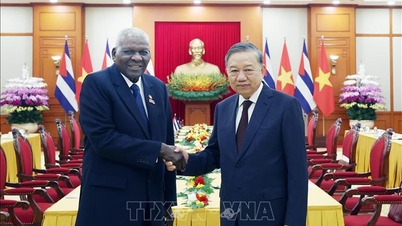
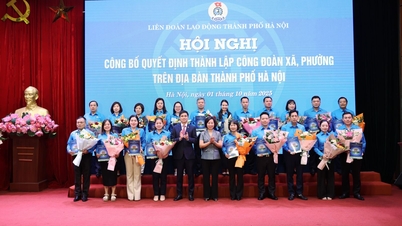








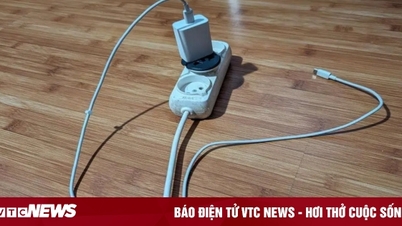



![[Photo] Panorama of the cable-stayed bridge, the final bottleneck of the Ben Luc-Long Thanh expressway](https://vphoto.vietnam.vn/thumb/1200x675/vietnam/resource/IMAGE/2025/9/30/391fdf21025541d6b2f092e49a17243f)
























































Comment (0)